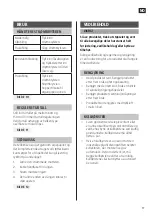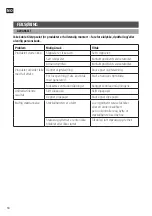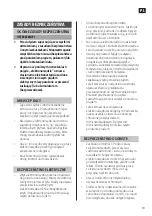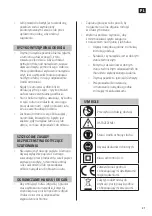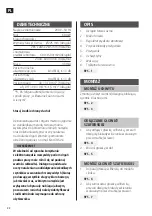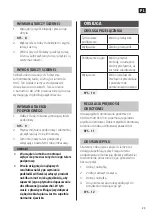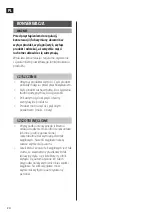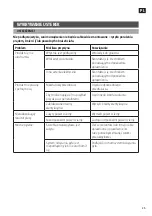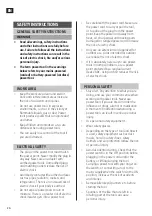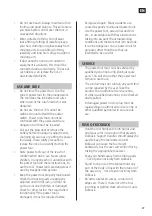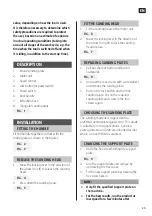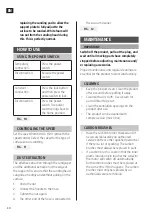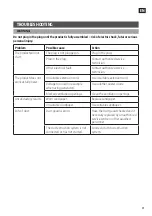
EN
29
value, depending on how the tool is used.
It is therefore necessary to determine which
safety precautions are required to protect
the user, based on an estimate of exposure
in actual operating conditions (taking into
account all stages of the work cycle, e.g. the
time when the tool is switched off and when
it is idling, in addition to the startup time).
DESCRIPTION
1. Round sanding plate
2. Motor unit
3. Speed control
4. Lock button for power switch
5. Power switch
6. Back handle
7. Extraction hose
8. Triangular sanding plate
FIG. 1
INSTALLATION
FITTING THE HANDLE
Fit the handle together and lock with the
locking lever as shown in the figures.
FIG. 2
FIG. 3
RELEASE THE SANDING HEAD
1. Move the locking lever in the direction of
the arrow (to left) to release the sanding
head.
FIG. 4
2. Press down the sanding head.
FIG. 5
FIT THE SANDING HEAD
1. Fit the sanding head in the motor unit.
FIG. 6
2. Move the locking lever in the direction of
the arrow (to right) to lock the sanding
head in place.
FIG. 7
REPLACING SANDING PLATES
1. Pull out the lock button and push it
backwards.
FIG. 8
2. Unscrew the four screws with a screwdriver
and remove the sanding plate.
3. Push in the lock button and turn the
sanding plate. Put on the required
sanding plate and screw in the four
screws again.
CHOOSING THE SANDING PLATE
The sanding machine is supplied with a
prefitted sanding plate (grade 100). This grade
is suitable for most applications. Sanding
plates grade 80 and 240 are intended for jobs
where a smooth finish is wanted.
CHANGING THE SUPPORT PLATE
1. Undo the hex screw holding the support
plate.
FIG. 9
2. Grip the support plate and remove by
unscrewing the hex screw.
3. Fit the new support plate by screwing the
hex screw back in.
NOTE:
• Only fit the specified support plate on
the machine.
• For the best results, run the product at
low speed for a few minutes after



